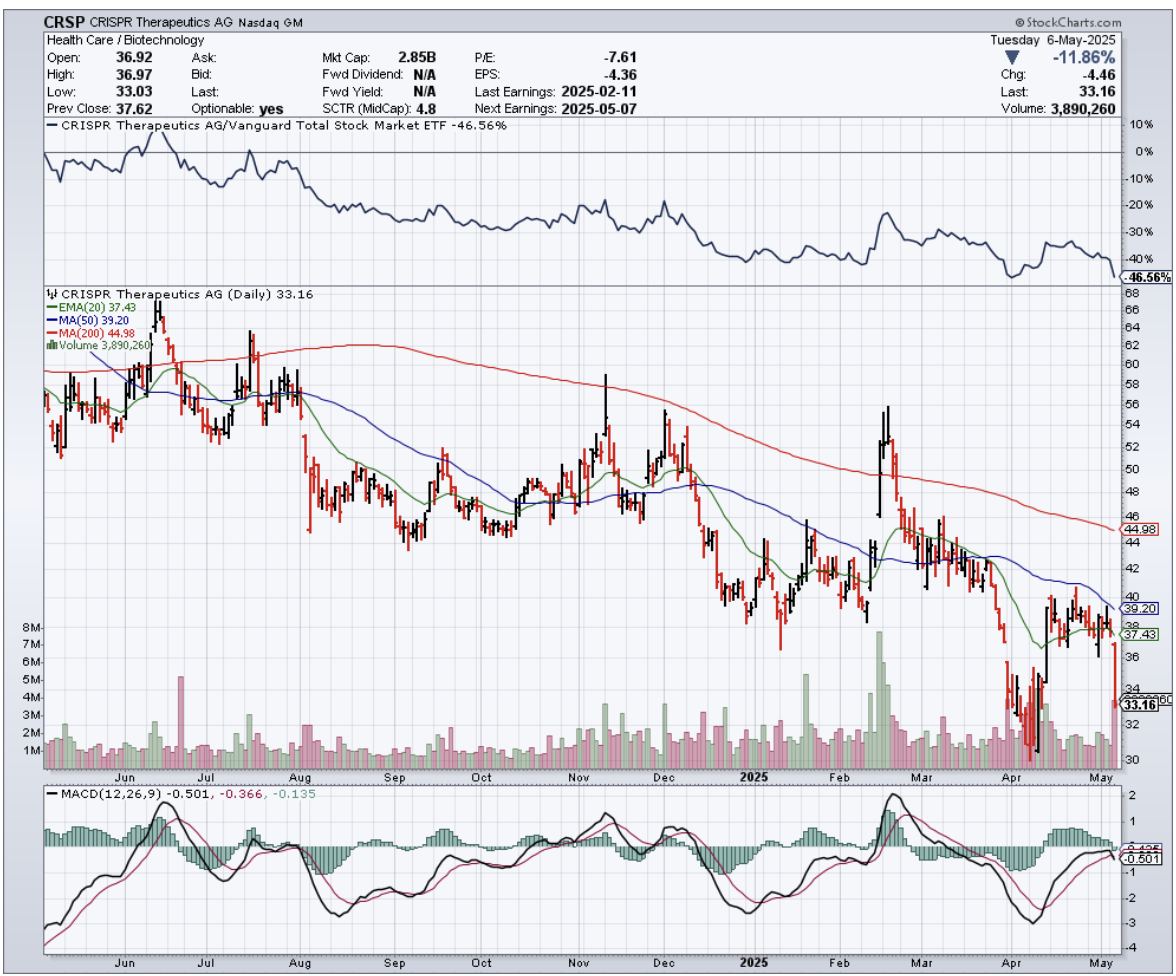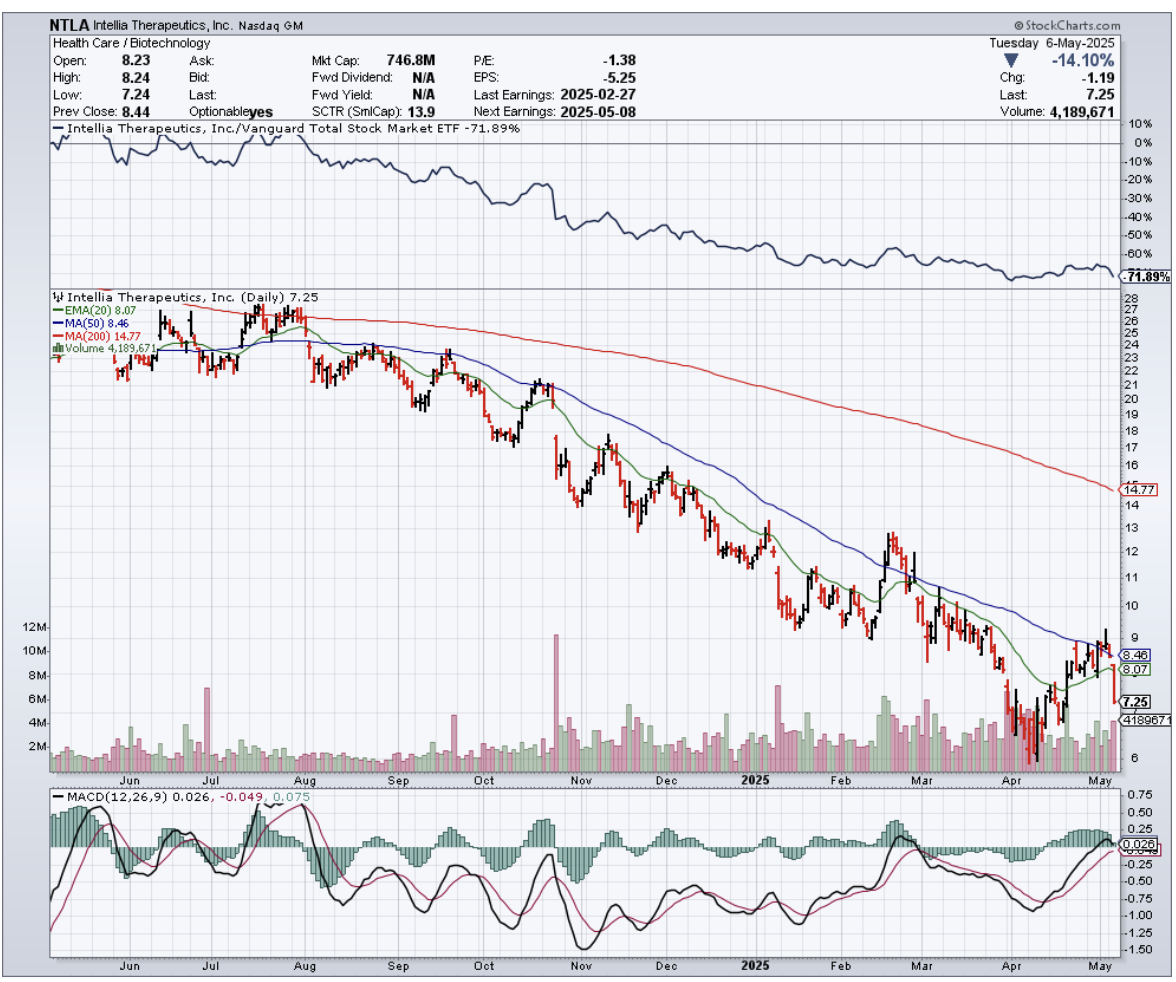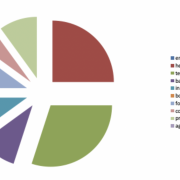A Double Helix Of Opportunity
I never fully appreciated the potential of gene therapy until last fall when my college friend Eric called with surprising news. His 14-year-old daughter Sophie, who'd struggled with sickle cell disease her whole life, had undergone treatment with Casgevy, a CRISPR-based gene therapy developed by CRISPR Therapeutics (CRSP) and Vertex (VRTX). Six months later, she hasn't needed a single blood transfusion or hospitalization—a transformative outcome for a girl accustomed to spending more weeks in hospital rooms than classrooms.
"The doctors keep using phrases like 'functionally cured,'" Eric told me. "I just know she's planning her first summer camp experience. That's miracle enough for me."
Eric's story prompted me to dive deeper into gene-editing therapies and the companies working on them. What struck me the most is that despite groundbreaking science, market volatility has created a disconnect between technological progress and stock valuations.
Gene therapy stocks like CRISPR Therapeutics and Intellia Therapeutics (NTLA) had a rocky first quarter of 2025, with shares dropping 2.82% and 24.19%, respectively. The broader market mirrored this instability, with the S&P 500 down nearly 3%. Yet, beneath these headline fluctuations lies an intriguing opportunity for patient long-term investors.
CRISPR is particularly interesting. It's sitting pretty with $1.9 billion in cash and equivalents as of the end of 2024. That's enough runway to keep the scientists doing what they do best for years without financial pressure.
More importantly, they're expecting their flagship product Casgevy to be accretive from late 2025, meaning actual revenue is on the horizon – not just the promise of future miracles.
Casgevy's approval for sickle cell disease and beta-thalassemia underscores CRISPR Therapeutics' tangible progress. With a cost of $2.2 million per patient, the price seems steep until compared against lifetime management costs of these conditions. Additionally, their pipeline extends beyond blood disorders into cardiovascular treatments like CTX-310 and CTX-320. These therapies aim to permanently eliminate the need for daily medications—a seismic shift in a market projected to grow from $156 billion in 2025 to nearly $215 billion by 2034.
CRISPR Therapeutics' strategic advantage is further enhanced by their U.S.-based manufacturing facility, strategically positioned to mitigate risks from reshoring trends and global supply chain disruptions.
On the other hand, Intellia faces a tighter financial outlook. With $861.73 million in cash and equivalents, they project operations funding through the first half of 2027. However, this timeline feels restrictive, especially since their first products aren't anticipated until at least 2027.
Although their financial runway is limited, Intellia's therapeutic breakthroughs still command attention. Their treatments NTLA-2002 for hereditary angioedema and Nex-z for transthyretin amyloidosis have shown extraordinary results. I remember a conversation with a trial participant who shared, "I went from planning my life around my disease to barely remembering I have it." Such transformative experiences underline the real-world potential of Intellia's science.
However, Intellia must dramatically reduce its annual cash burn from $592 million to around $345 million to ensure survival until commercialization. This aggressive belt-tightening could jeopardize their momentum.
Both companies currently trade at attractive valuations given their prospects. CRISPR Therapeutics holds a price-to-book ratio below the sector median, with cash comprising 57% of its market cap. Intellia's cash reserves represent an astounding 94% of its market cap, suggesting significant market undervaluation of its intellectual property and promising pipeline.
For investors able to tolerate short-term volatility, this disconnect offers a potentially lucrative entry point, particularly with CRISPR Therapeutics’ imminent commercial revenue.
As I told Eric, the market currently undervalues these revolutionary companies despite proven science. Eventually, stock prices will reflect this reality. I'm cautiously building positions during these dips, anticipating the long-term transformative impact of these therapies.
Just ask Sophie, who’s packing for summer camp instead of preparing for another hospital stay.



